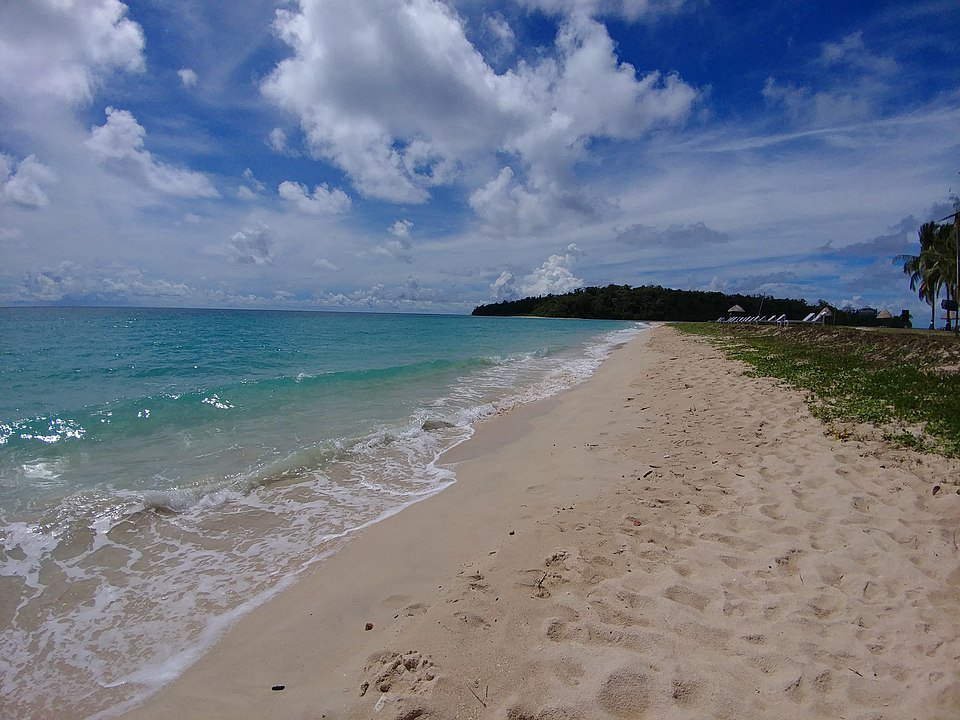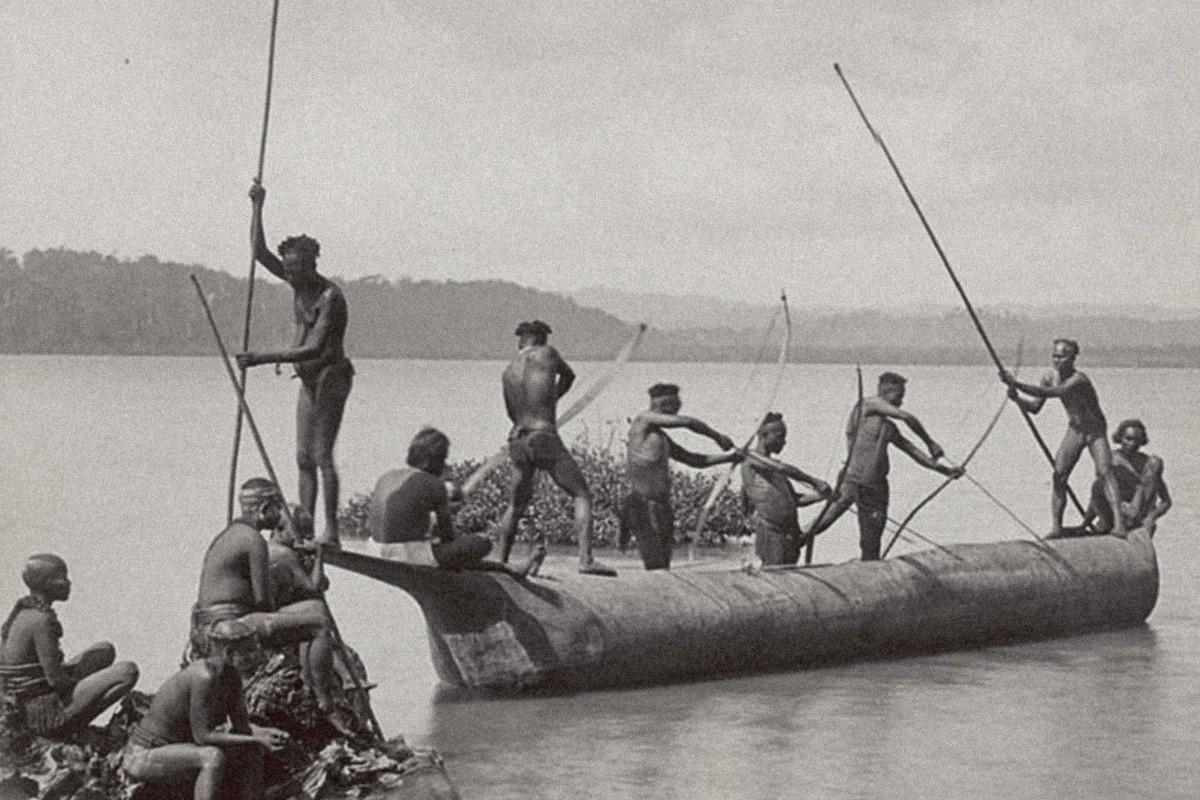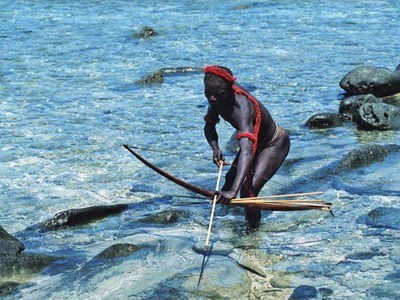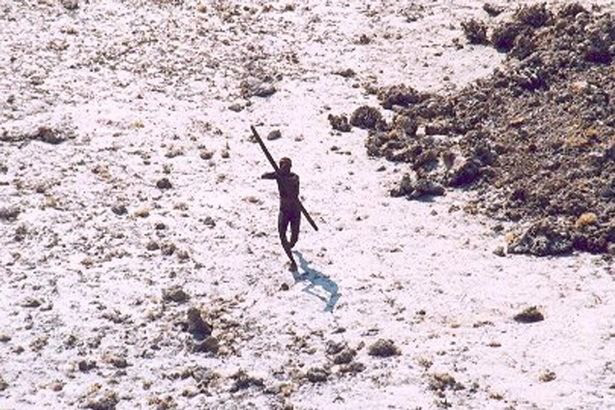
North Sentinel Island in 2009
Image Credit: en.wikipedia.org
In our childhood, many of us were dreaming of finding ourselves on a mysterious island with many treasures and adventures. However, it's not that simple when that island involves intact tribes and mysterious wilderness. While the world is more connected than ever, there are still isolated communities of people around the world. It's hard to know how many uncontacted tribes exist today but one of them surely withstand in the Indian territory. And they’re one of the few mostly uncontacted groups left in the world.

Ross and Simth island near Diglipur, Anadaman Nicobar
Image Credit: en.wikipedia.org
North Sentinel Island is a tiny island, surrounded by a shallow reef with no natural harbours. And nominally, the island belongs to the South Andaman administrative district, part of the Indian union territory of Andaman and Nicobar Islands, which also includes South Sentinel Island. North Sentinel is home to the Sentinelese, a tribe in voluntary isolation who have opposed, often violently, any touch with the outside world. The Andaman and Nicobar Islands Protection of Aboriginal Tribes Act of 1956, prohibits travel to the island and any approach closer than five oceanic miles (9.26 km) in order to prevent the tribe's people from contracting diseases to which they have no immunity. In practice, Indian authorities recognise the tribe's desire to be left alone and restrict their role to remote surveying, and the Indian government do not prosecute them for killing people.

Image Credit: Thought Catalog
According to a 2011 census measure, and based on anthropologists’ estimations of how many people the island could support, there are probably somewhere between 80 and 150 people on North Sentinel Island, although it could be as many as 500 or as few as 15. The Sentinelese people are related to other indigenous minorities in the Andaman Islands, but they’ve been isolated for long enough that other Andaman groups, like the Onge and the Jarawa, can’t understand their language. The Sentinelese tend to live in families of 3 to 4 people within shelter type huts with no side walls although some appear to live in larger communal homes which are more elaborately constructed, with elevated floors and distinct family quarters. They are equipped with javelins and flat bows, with incredible accuracy against human targets as far as 350 feet. They also have three types of arrows, used for fishing, hunting, and unarmed ones for shooting warning shots, which they use to ward off helicopters flying over the island.

Image Credit: TOI
In historic times, other distant communities tried to mix up with the people of Sentinal island, and the experience definitely didn’t leave the Sentinelese with warm feelings toward foreign visitors. And over the last 200 years, outsiders have tried visiting the island several times, but it often ended badly for both sides. But an anthropologist, Trinoknath Pandit, working under the backing of the Indian government, landed on North Sentinel Island in 1967. And after a long period, he led a team that established contact with the Sentinelese people on 4 January 1991, but they found recklessly abandoned villages. The people seem to have seen the intruders coming and fled to hiding places further inland. Pandit and his colleagues kept trying to make contact, mostly by dropping off coconuts and other gifts. The Sentinelese didn’t care much for gifts, which they speared and then buried in the sand. Sentinelese hospitality had its limits. A few years later, on another visit, a Sentinelese man signalled to Pandit that it was time for the guests to leave, by drawing his knife and making a cutting gesture.
On 4 January 1991, a young Indian woman anthropologist went to hand over coconut to a man from the Sentinelese tribe. This was the first time a woman was a part of a contact expedition with the Sentinelese, the presence of a woman indicated that the contact party meant no harm, and they put their guard down. Dr. Madhumala Chattopadhyay with the Anthropological Survey of India, who went on to spend six years researching the various primitive tribes of the Andaman and Nicobar Islands. She is also the first woman to be accepted by another Andaman tribe, the Jarawas, with whom she established a friendly relationship, especially the womenfolk. Unfortunately, her efforts remain forgotten.

Image Credit: getbengal.com
In an another incidence, when Indian Coast Guard helicopters flew over the island after the 2004 tsunami, they found the Sentinelese in good shape and not at all pleased to see them, and not at all hesitant to attack the helicopter with bows and arrows.

Image Credit: TheMirror
A couple of years later, in 2006, an Indian crab harvesting boat drifted ashore, and the Sentinelese killed both fishermen and buried their remains. An American tourist named John Allen Chau was also killed with arrows when he illegally landed on North Sentinel on 17 November 2018.

The death of this American tourist had drawn the world’s attention to the small island’s detached citizens. The incident has also sparked discussion about protections for relatively uncontacted groups like the Sentinelese.
Now, what we know for sure is that they don’t care much for the company, and they’ve expressed that clearly even without a common language. At the same time, it’s thrilling to think about what might have been happening in Sentinelese villages behind the scenes. Sentinel island seems to emerge as a mystery, leaving all of us to wonder about the life of our fellow Indians.
(Source - Wikipedia/Indian Express/Forbes)
